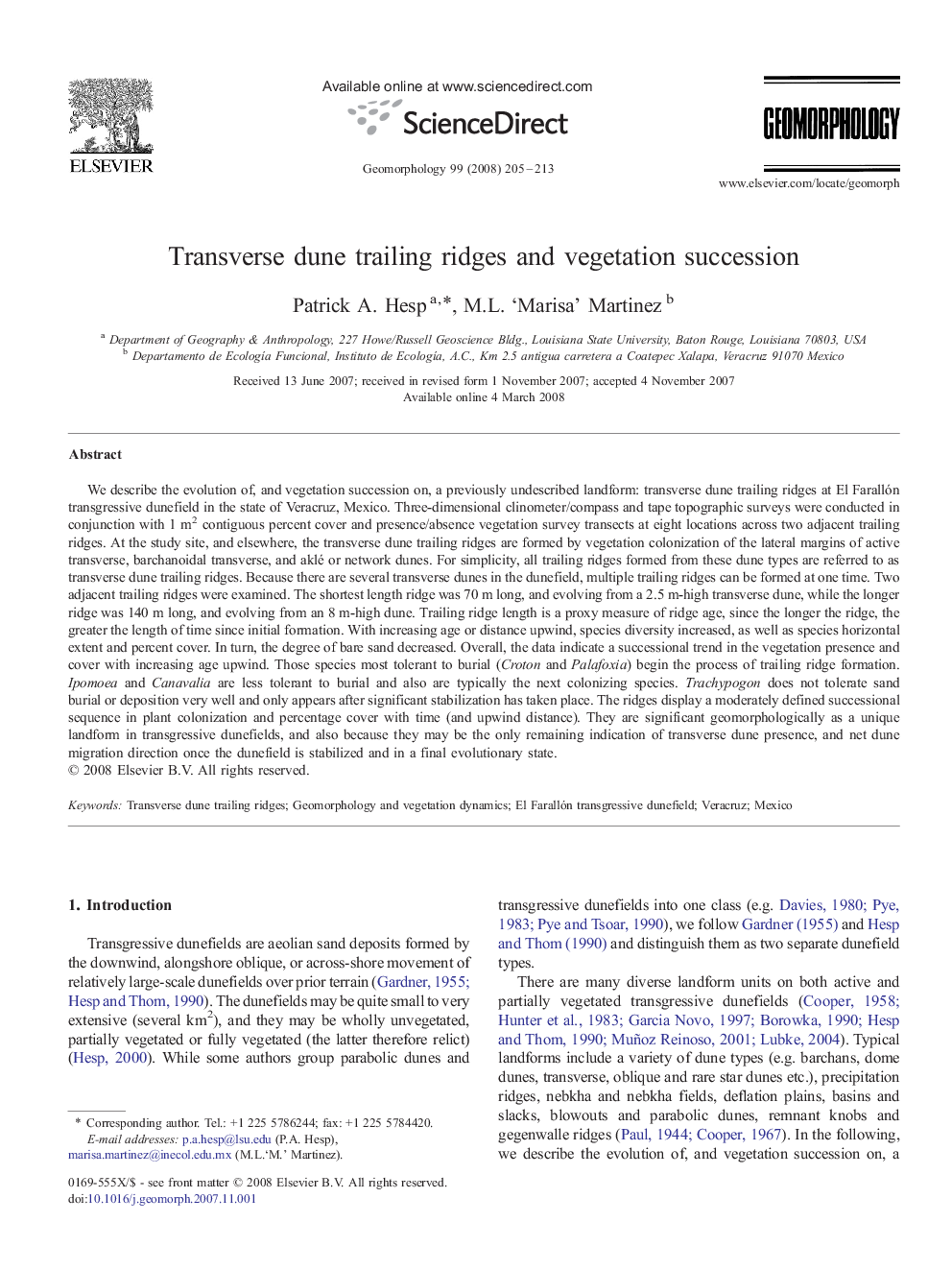| کد مقاله | کد نشریه | سال انتشار | مقاله انگلیسی | نسخه تمام متن |
|---|---|---|---|---|
| 4687061 | 1635555 | 2008 | 9 صفحه PDF | دانلود رایگان |

We describe the evolution of, and vegetation succession on, a previously undescribed landform: transverse dune trailing ridges at El Farallón transgressive dunefield in the state of Veracruz, Mexico. Three-dimensional clinometer/compass and tape topographic surveys were conducted in conjunction with 1 m2 contiguous percent cover and presence/absence vegetation survey transects at eight locations across two adjacent trailing ridges. At the study site, and elsewhere, the transverse dune trailing ridges are formed by vegetation colonization of the lateral margins of active transverse, barchanoidal transverse, and aklé or network dunes. For simplicity, all trailing ridges formed from these dune types are referred to as transverse dune trailing ridges. Because there are several transverse dunes in the dunefield, multiple trailing ridges can be formed at one time. Two adjacent trailing ridges were examined. The shortest length ridge was 70 m long, and evolving from a 2.5 m-high transverse dune, while the longer ridge was 140 m long, and evolving from an 8 m-high dune. Trailing ridge length is a proxy measure of ridge age, since the longer the ridge, the greater the length of time since initial formation. With increasing age or distance upwind, species diversity increased, as well as species horizontal extent and percent cover. In turn, the degree of bare sand decreased. Overall, the data indicate a successional trend in the vegetation presence and cover with increasing age upwind. Those species most tolerant to burial (Croton and Palafoxia) begin the process of trailing ridge formation. Ipomoea and Canavalia are less tolerant to burial and also are typically the next colonizing species. Trachypogon does not tolerate sand burial or deposition very well and only appears after significant stabilization has taken place. The ridges display a moderately defined successional sequence in plant colonization and percentage cover with time (and upwind distance). They are significant geomorphologically as a unique landform in transgressive dunefields, and also because they may be the only remaining indication of transverse dune presence, and net dune migration direction once the dunefield is stabilized and in a final evolutionary state.
Journal: Geomorphology - Volume 99, Issues 1–4, 1 July 2008, Pages 205–213